As a storyteller, Alisa Banks examines the concepts of body, home and terrain, and relates them to broader issues within culture and society. These essential and personal frameworks of life are gracefully captured while referencing traditional crafts, memories, and aspects of the Louisiana Creole culture. Her delicately pieced and hand stitched work elegantly combines an assortment of found materials, paper, text, photos, hair and fragile plants.
Alisa’s work has been exhibited internationally and is in several collections, including the Smithsonian Institute, the US Library of Congress, and the New York Public Library.
In this interview, Alisa shares how her inspiration comes from her love of stories and the magical childhood memories of the talented craftswomen in her family.
She also shows us how editing can be a really important part of your artistic process, throughout your research phase and also during the creative stage. Working on several projects at a time, Alisa researches, elaborates and edits until each idea is distilled into a form ready for production. She continues her editing intuitively during the making process, only including what is necessary to communicate her chosen story to the viewer.
The resulting work might appear fragile and understated, but this often belies the considerable amount of thought, research and production activity that has gone into the process.
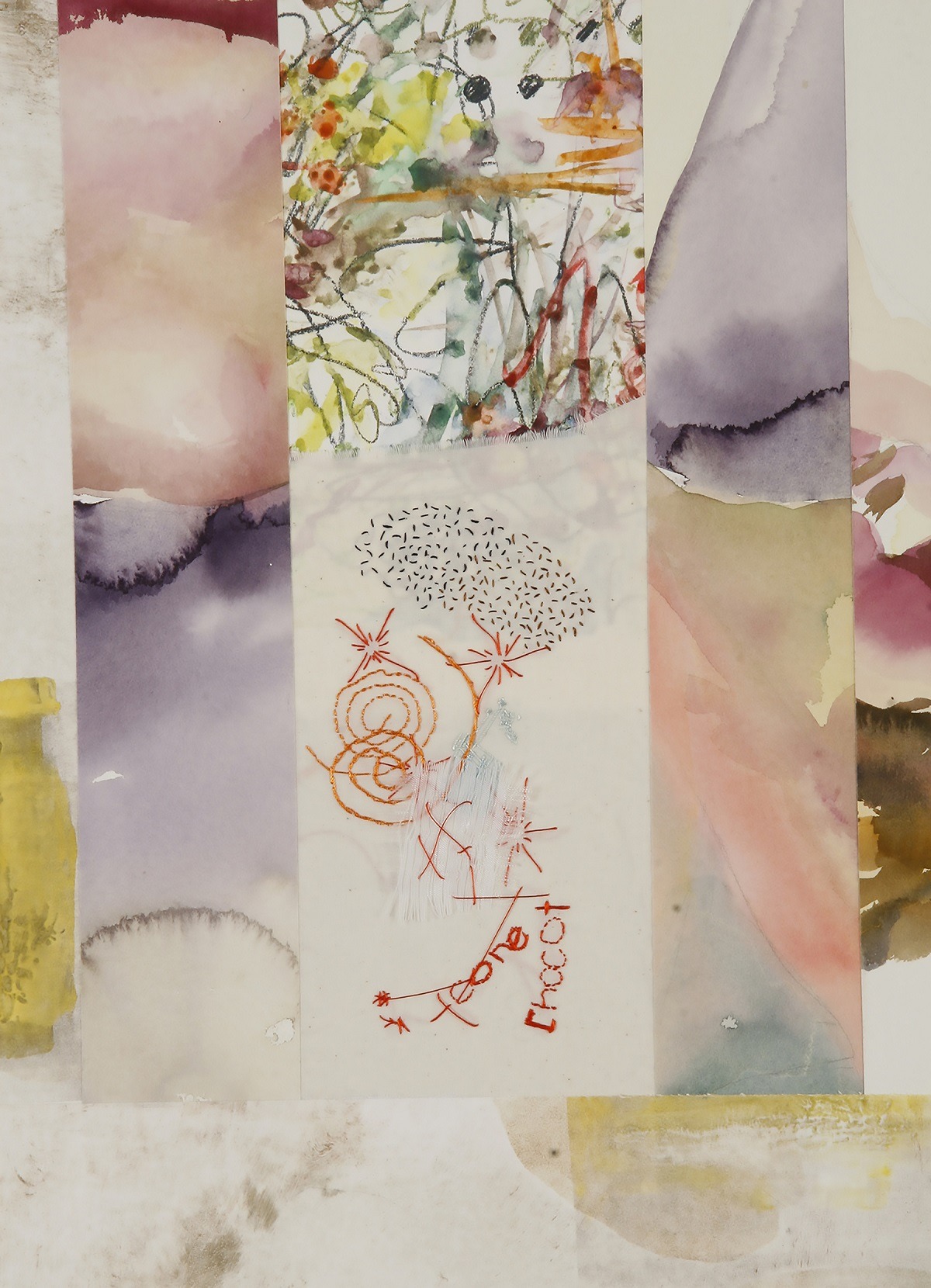
Textile-filled memories
TextileArtist.org: What initially attracted you to textiles as a medium? How was your imagination captured?
Alisa Banks: I have a long history with textiles, although initially I only included them in my artwork as a subject or background in oil and watercolour still life paintings.
At the end of my graduate studies, textiles began to escape from my paintings, becoming the focus. I’d discovered a book featuring work by the quilters from Gee’s Bend, Alabama, which was both revelatory and familiar.
That year I cut up most of my paintings, then mixed and rearranged them to create new work. I added stitching over these new works or sewed the pieces together. The results were reminiscent of quilts.
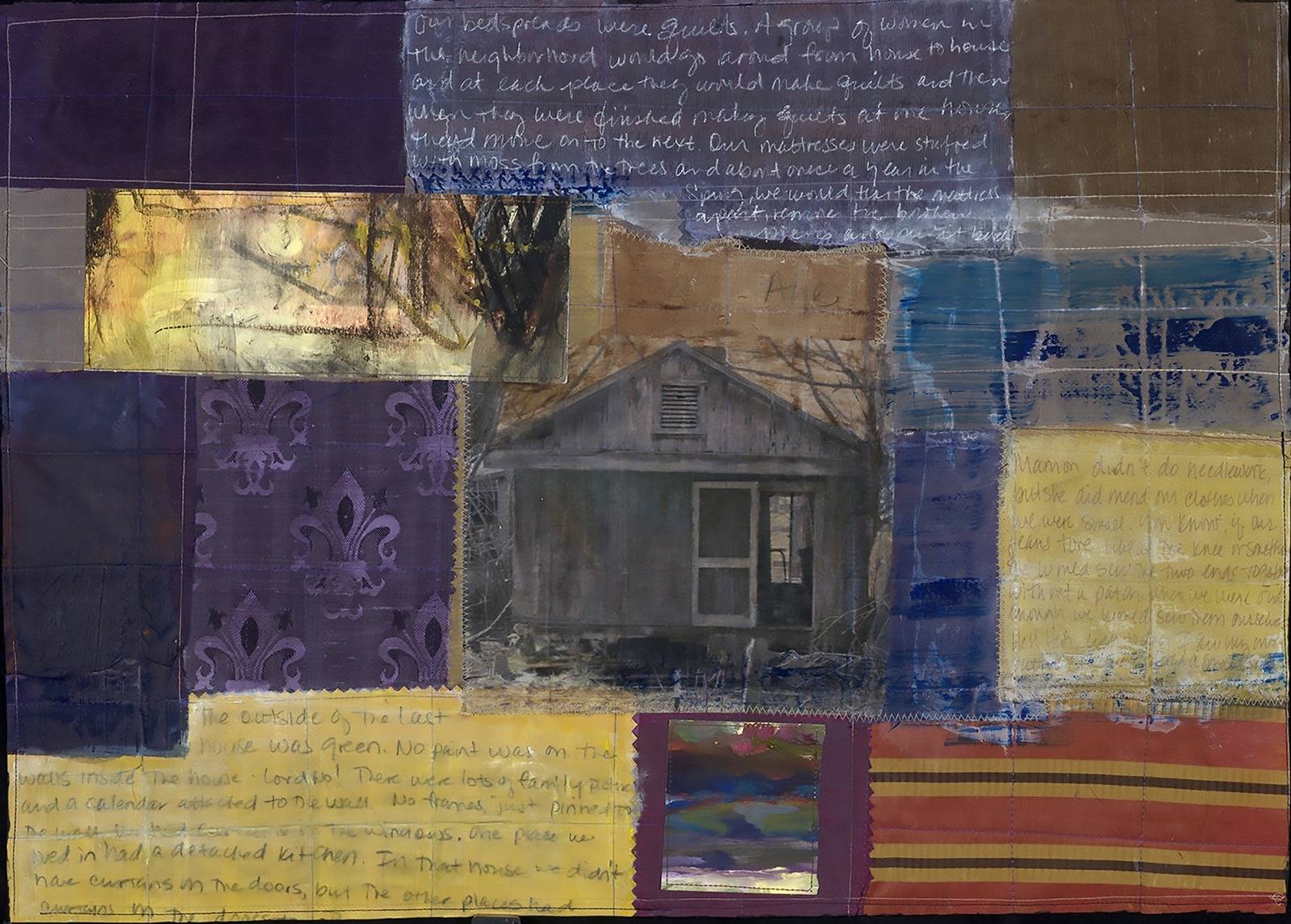
What or who were your early influences and how has your life/upbringing influenced your work?
As a small child I remember being mesmerised as my mom placed yards of fabric on our dining room table. She proceeded to cut and sew the material into outfits for me, my two sisters, or my baby brother. It seemed like a magical transformation!
My dad was in the military service and when we in the States, we would visit my parents’ hometown in Louisiana. My mom’s family was very crafty. I witnessed a quilting bee with my grandmother, and saw my aunt sew outfits for an entire wedding party including the bride’s wedding dress. She was my ultimate hero!
My grandmother and aunts crocheted and embroidered, and a great aunt made tatted vintage lace. These incredible women excelled at many different textile techniques.
Perhaps because of the sporadic nature of our visits, those memories are particularly impactful. It is probably why my work often alludes to aspects of the Louisiana Creole culture.
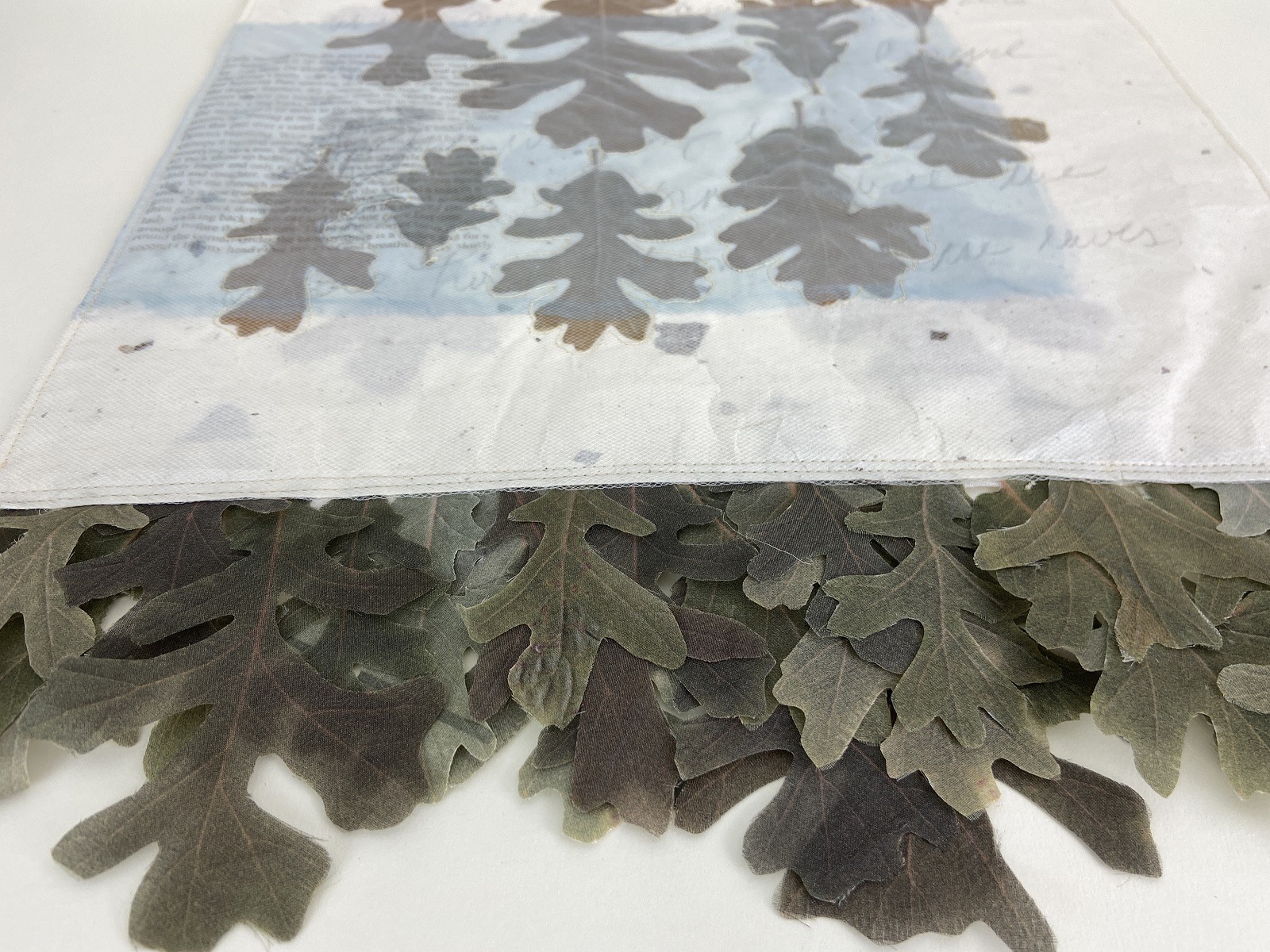
What was your route to becoming an artist?
My route to becoming an artist was very circuitous and filled with hiccups!
I took an occasional art class in junior high and high school. Then as a teenager, I sewed most of my own clothes. I initially enrolled at university to study fashion, but switched to medical laboratory science during my second year. At that point science studies ruled my time.
After graduation, I accepted a position at a hospital laboratory and began to crave something new. I enrolled in art classes at a local community college. This was at the suggestion of my husband, who was aware of my interest in art.
Classes stopped when our daughter was born, then resumed at a slower pace when she began elementary school. Throughout this time I continued working in the laboratory full time. When our daughter was in high school, I enrolled in graduate school to study for a Master of Fine Art degree.
Looking back it seems like a daunting path, but I have to give credit my husband for being a very supportive partner and involved parent!
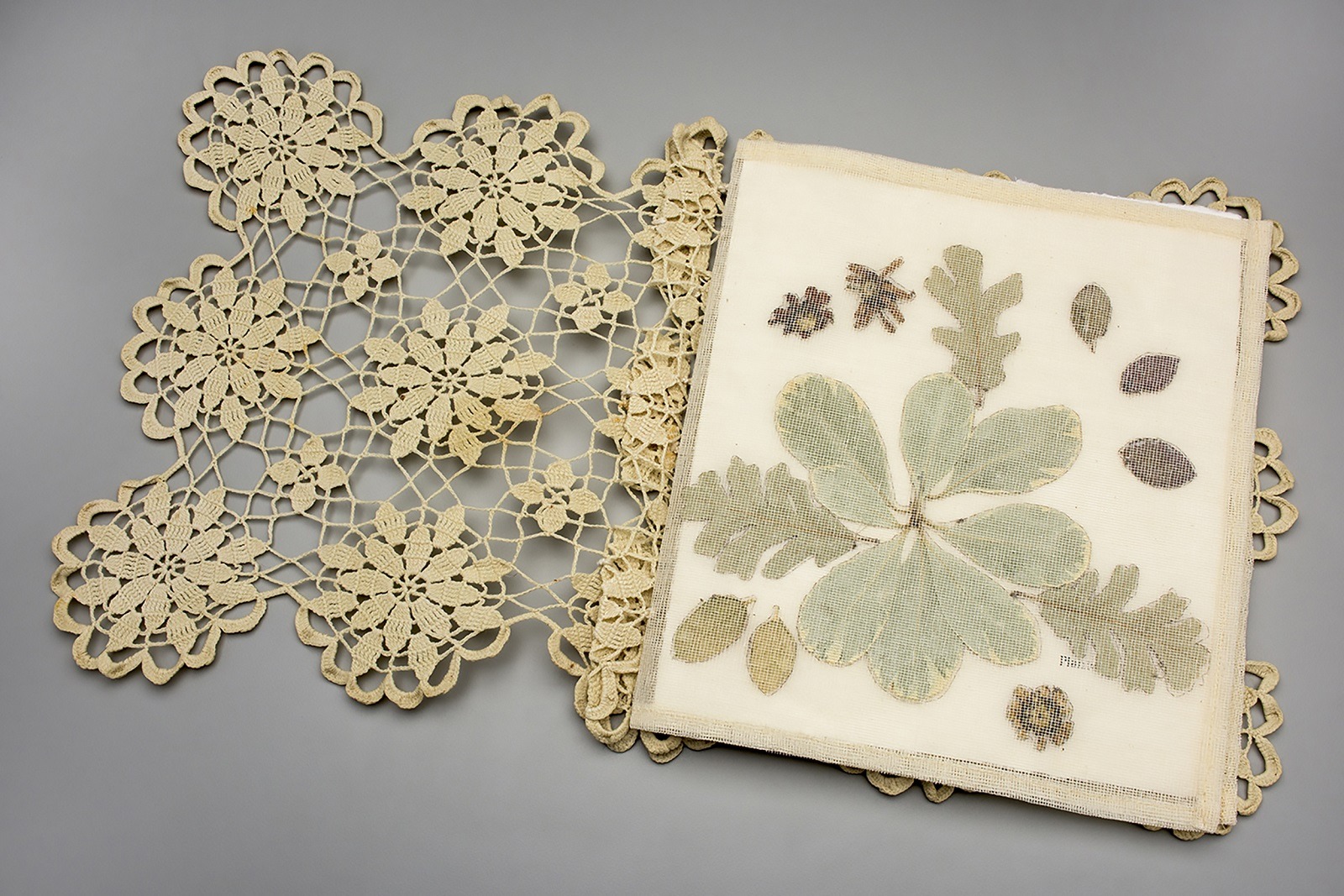
Essence and editing
Tell us about your process from conception to creation
Inspiration for my work comes from a wide range of sources, but I typically begin by writing or sketching. My sketchbooks are text-heavy.
Text featured in my work is the result of interviews I have conducted or essays I have written. I usually incorporate stories in my work; my own stories or those of people I’ve interviewed. I relate these stories to some broader aspect of culture.
A single work will often contain various meanings, and I often conduct research on topics relevant to the intended meanings.
I’ll decide if the work should exist in two-dimensional or three-dimensional form. Two-dimensional work is usually improvisational, beginning with a series of rough sketches. My three-dimensional objects also begin with sketches, but I also make samples of some aspect of the design or make a rough model, especially if the form is more complex.
Additional research may be required if I am considering using a process in which I am not fluent.
Once the basic idea is hashed out, materials are gathered and the vetting process begins. Initial ideas tend to be more elaborate and require much editing! It is not unusual for this process to take weeks, months, or even years. I always have several projects at varying stages of completion. Invariably, I’ll get to a point where the idea needs to incubate for a while and will pack the supporting materials together and put them aside. Time aids the distillation process and provides a clearer path when I return to the project.
Once production begins, the editing continues. I consider, “Will this work?”, “I leave this part out, will the intended effect remain?” and “Is there a better way to do this?”
I am constantly asking these questions because my goal is to include only what I believe is absolutely necessary to get the idea across. I want to avoid the work appearing overwrought.
Sometimes, a bold move is required. It takes trust and courage to make a mark on an unforgiving surface! I consider editing a form of polishing, so to speak, and I rely heavily on intuition. The resulting work often appears fairly understated for the amount of activity that occurred to create it!
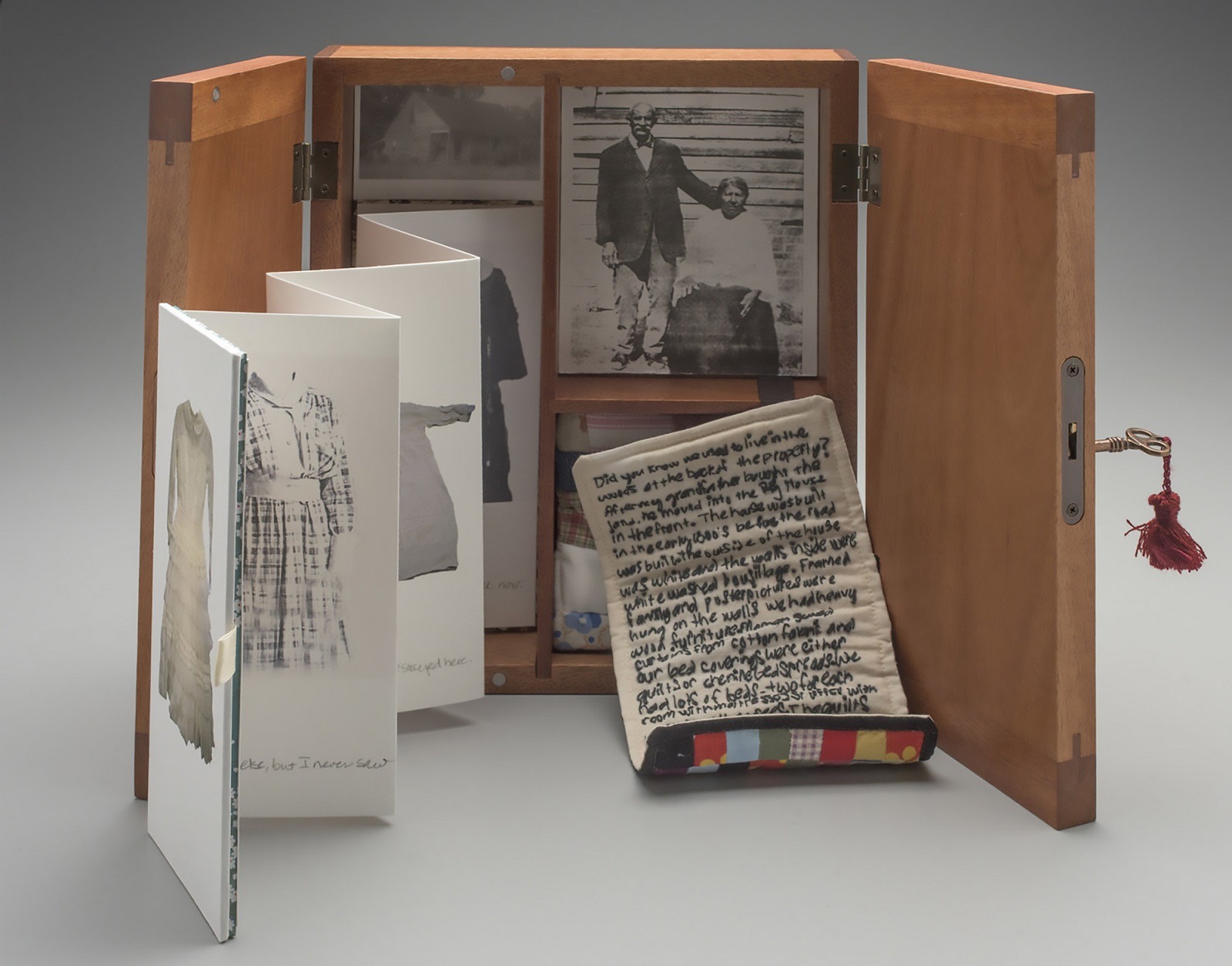
Tell us a bit about your chosen techniques and how you use them
The sewing machine and computer are my workhorses, particularly during the planning phases, but my preference is to use low tech production techniques such as handwriting, hand stitching, and hand drawing.
Layers are created by sandwiching items between fabric and hand stitching around the object. I add more hand stitching on the surface of the sandwich. Sometimes, movable overlays are created instead of stationary layers. Or maybe a substance such as beeswax is layered over objects. For works that incorporate it, hair is usually knotted or crocheted. I am fond of recycled textiles and may crochet a cover or use a crocheted textile to create the pages of a book.
Piecing is usually accomplished on the sewing machine and at times I will run fabric through an inkjet printer.
Other techniques are added when appropriate. If it’s not in my repertoire, I will research and practice it first. If a specialised skill is required then I either search for a substitute or occasionally I’ll hire a craftsperson.
For the work ‘Armoire’, I felt it was important to use a wooden box for the form of my grandmother’s mahogany armoire. After lots of research I concluded that I didn’t possess the sufficient skillset or equipment to fabricate the box. It was going to take an inordinate amount of time to produce a satisfactory result. In the end I located a woodworker to build the box to my design and a finisher to stain it, to achieve the effect I wanted.
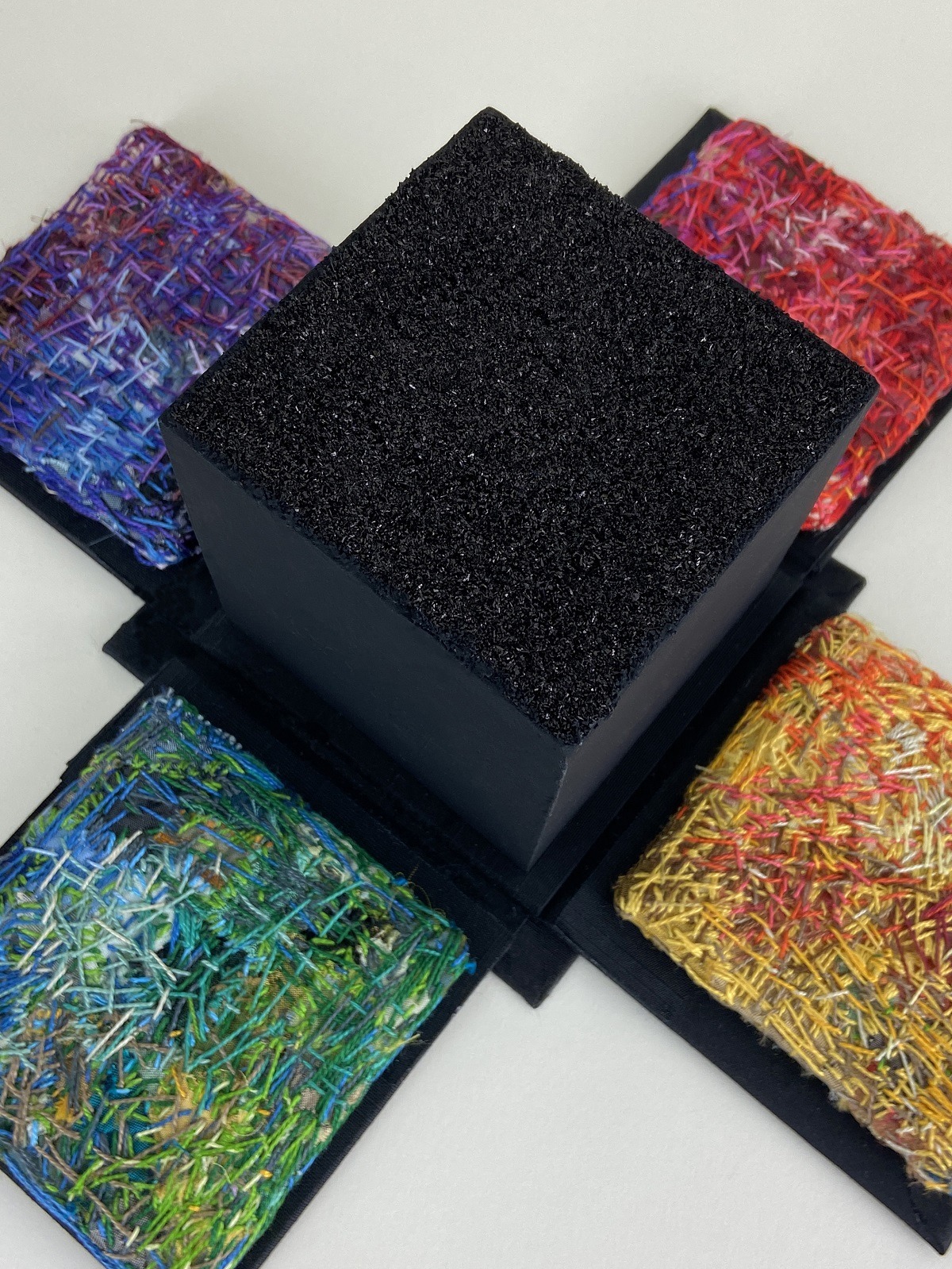
What currently inspires you?
Current events, nature and social justice topics are my current inspiration, especially when I can relate them to a story or when they inspire an essay. I also love plants and often incorporate them in my work.
Most recently, during the pandemic, bold colour has returned to my work after years of using subdued tones.
One morning, after weeks of hearing distressing news at the onset of the pandemic, I turned away from the television to look out into my garden. I found that spring had started, in spite of the chaos that existed in the world. There was nothing new or surprising in that, of course, but in that moment of time the contrast seemed significant.
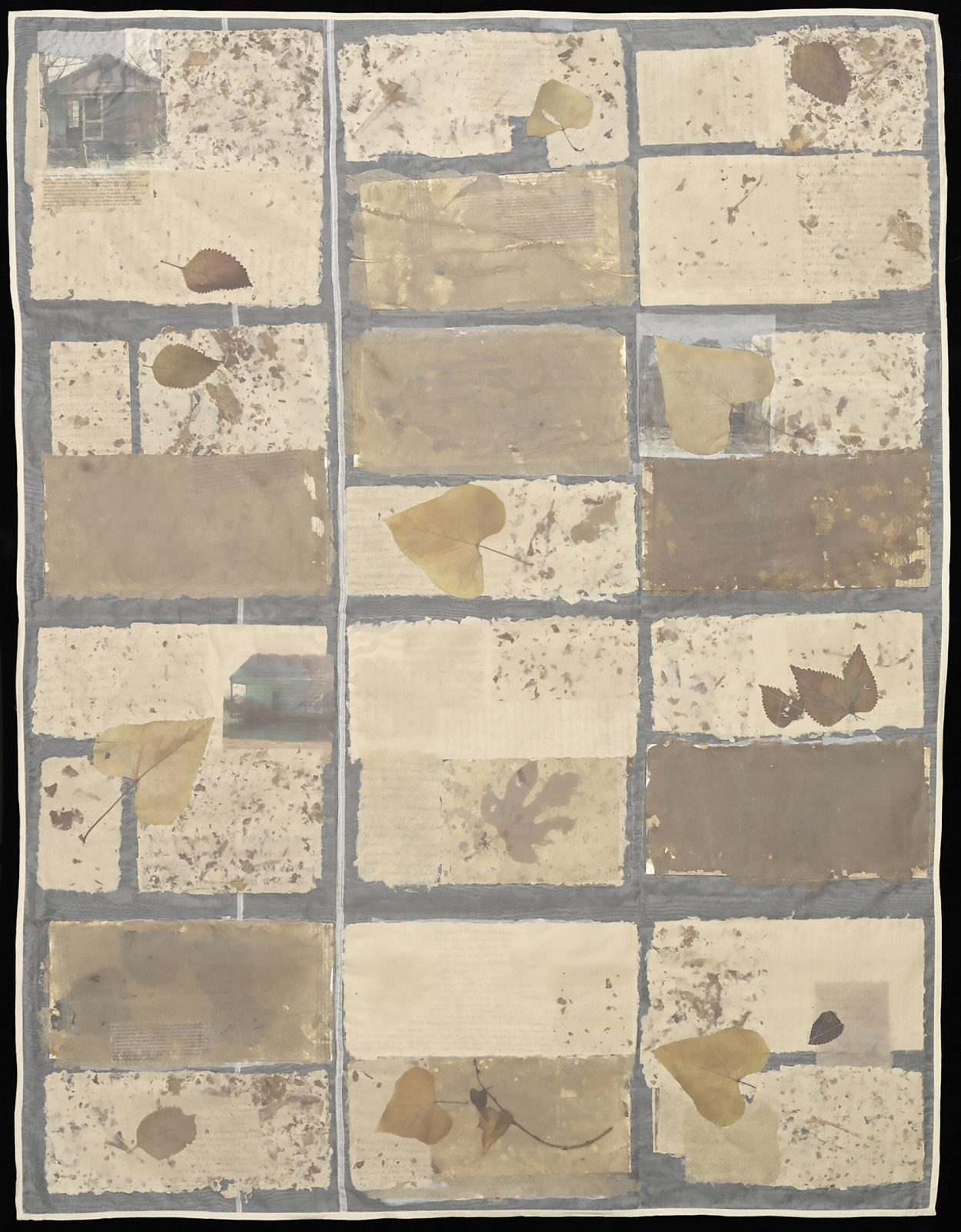
Home, terrain, body
Tell us about a piece of your work that holds particularly fond memories and why?
I am fond of ‘Whispers’, a piece I created a few years ago.
It was the first time I had incorporated handmade and commercial papers, fabric, machine piecing, hand stitching, text, photos, layering and plants into my work. It was also one of my early uses of the quilt format and the first artwork I considered to be collage, quilt, and book.
Whispers features stories and images from my family history. Several family members mailed dried plants from their gardens and these were incorporated into the work, either by sandwiching them between layers of organza or as paper inclusions.
This was also the first time I used silk organza, a material I use often now.
Even sweeter was the fact that ‘Whispers’ was one of the first two textile collages that I exhibited and that it also received an award.
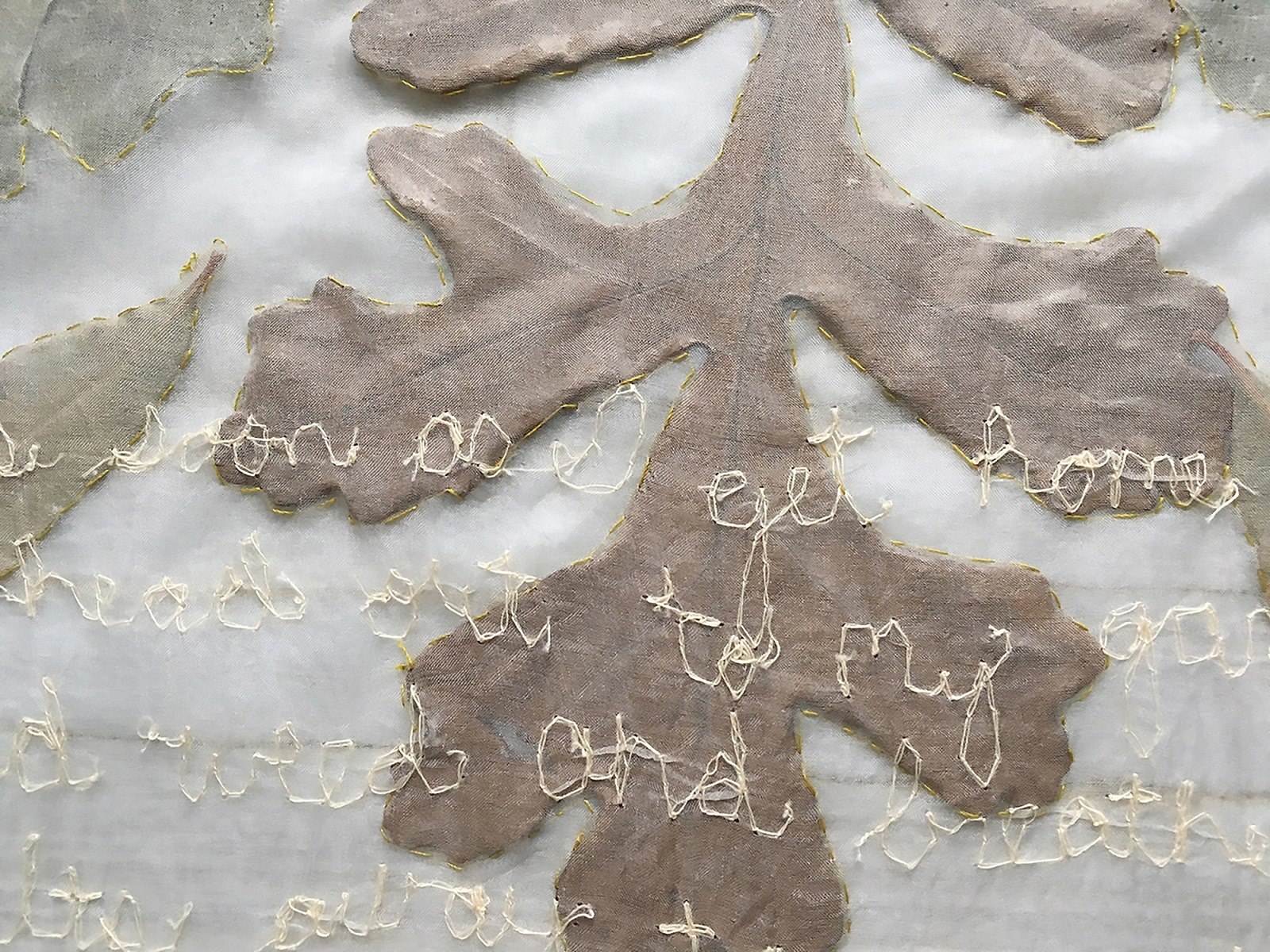
How has your work developed since you began and how do you see it evolving in the future?
Each topic within my Home, Terrain, and Body series stands on its own as an independent work. This will likely continue to some degree, but I am also inspired by sweeping, inclusive, multi-dimensional stories that can also relate to small personal stories that are not necessarily mine. I have begun research and writing for a project that will encompass a range of topics that relate to all three series.
I am very interested in the performative aspect of viewership and aim to explore opportunities that could provide immersive and multi-sensory experiences.
For more information visit www.alisabanks.com
Intrigued by Alisa’s use of textiles, text and plant material to tell a story? Let us know by leaving a comment below.
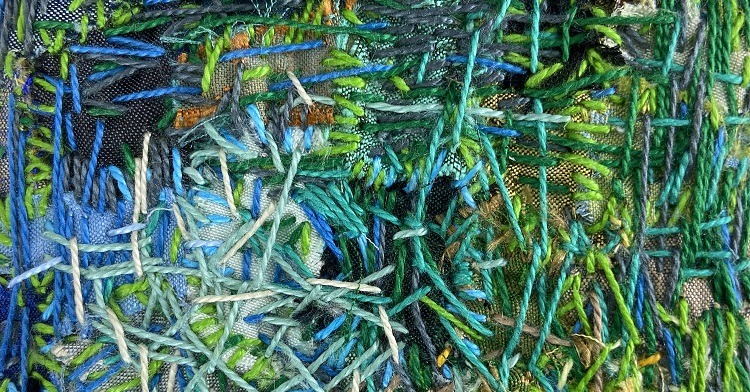

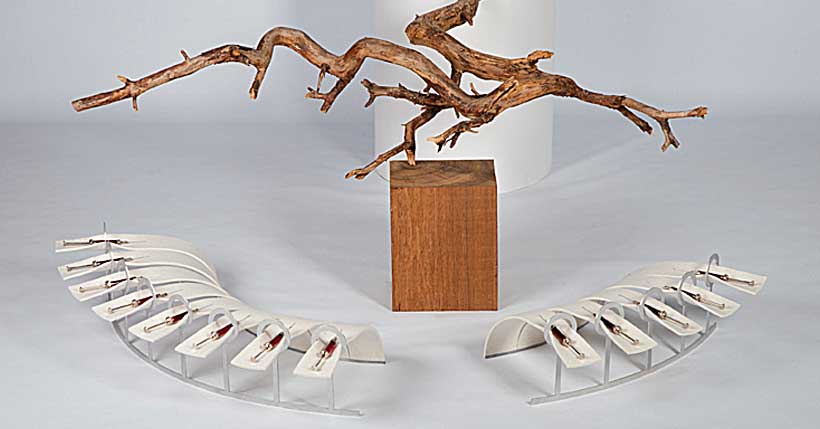
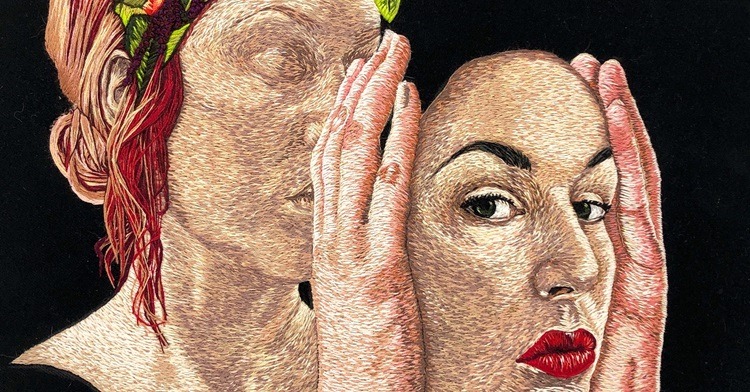

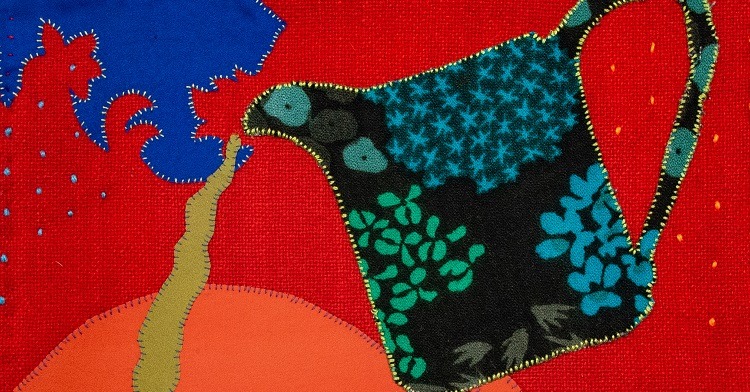
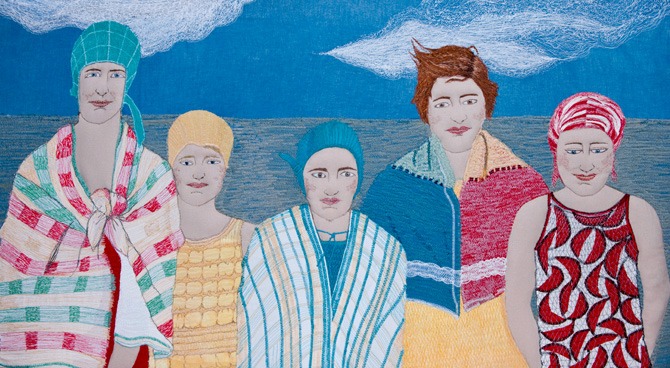
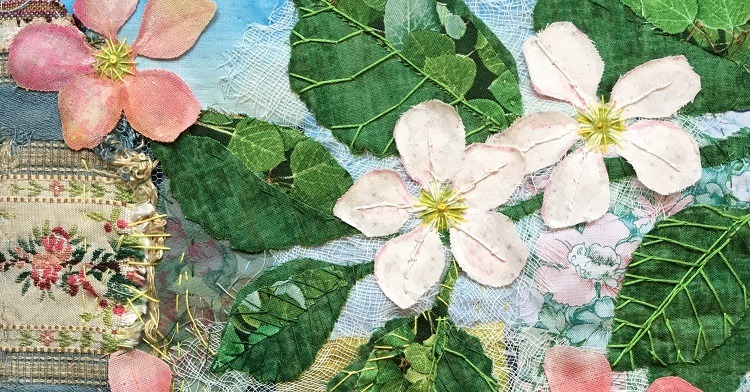
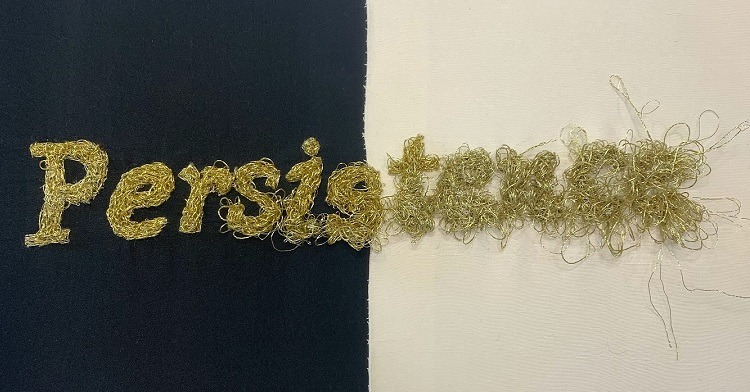

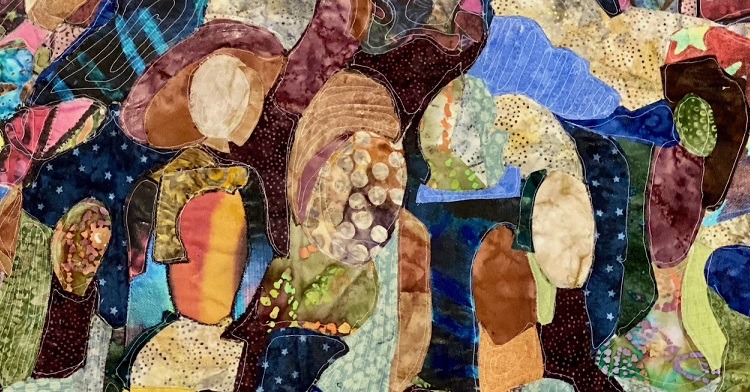
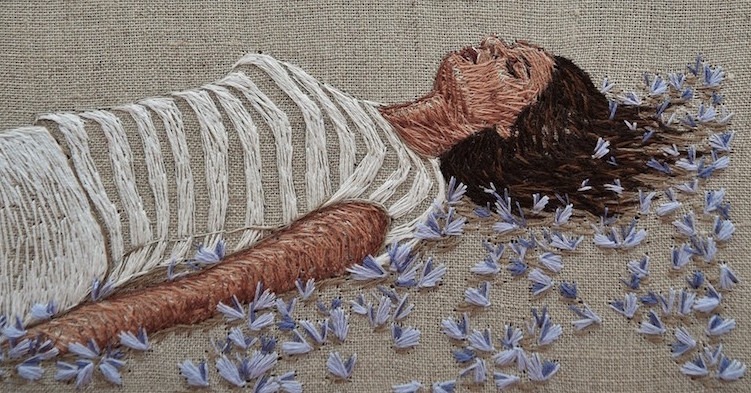
2 comments
Mary Liz Tippin-Moody
This artists’ life path, chosen art elements and inspirations are so viscerally familiar to me. I so appreciate her subtle color choices, quietly reassuring combinations of photo imagery, plant materials, and painted paper, conjoined with stitching. The use of stitches, machine but mostly the hand-stitching makes this work unique and the statements powerful. Profoundly beautiful and inspiring to me – but I am sure so many others. I thank you for sharing this profile with us.
Alisa Banks
Hello Mary,
So happy to hear that the work speaks to you. I continually find that although the stories presented may be singular or specific, they appeal to a broader audience for the very reasons that you speak of. Thank you so much for sharing your thoughts. ~alisa